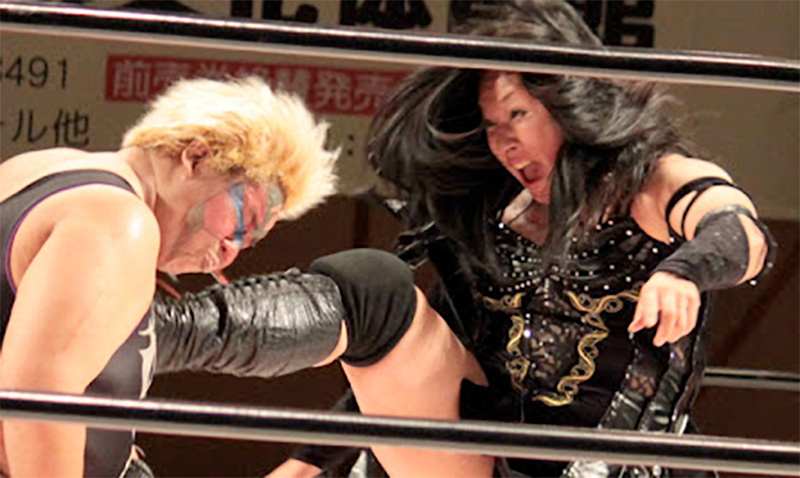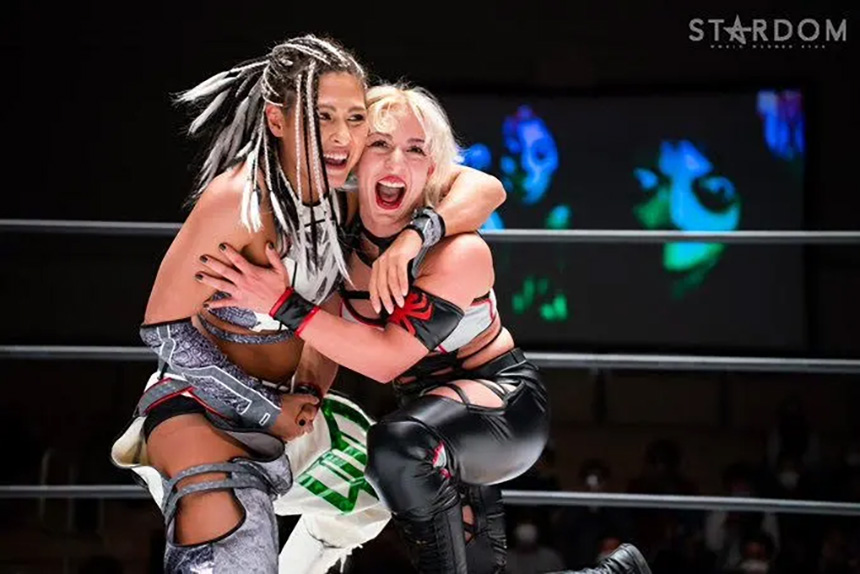What does Fighting Spirit mean to fans of Japanese wrestling or Puroresu?
The most noticeable difference between Japanese pro wrestling, or Puroresu, and the pro wrestling found in the US typically associated with the WWE, is a greater focus on the physical struggle of a match rather than out-of-ring storylines and mic work. While Puroresu matches, whether Joshi or male, can vary from comedy and "garbage" (hardcore) to serious main events even within the same promotion, a common thread of the in-ring action is the Japanese concept of Fighting Spirit. So, what exactly is Fighting Spirit and where did it come from?
Fighting Spirit refers to the determination a wrestler, surviving and tolerating the pain of an opponent's attacks, and ultimately mustering the strength to continue whether he or she ultimately wins or not. It's the perseverance in the face of adversity. It's the reason why almost every Japanese wrestling crowd will pop (cheer and clap) the loudest when a wrestler kicks out after a two-count after being on the receiving end of a brutal-looking signature or finishing move executed by an opponent. In many matches, especially in promotions like STARDOM, the crowd tends to support both wrestlers this way, showing respect for both sides of the struggle as they demonstrate Fighting Spirit after taking their opponent's most damaging-looking techniques.

From a historical and cultural point of view, a Japanese historian might trace Fighting Spirit back to the concept of Yamato-Damashii.
As an island off the coast of Asia, Japan's early scholars would travel into the continent to learn and emulate certain intellectual influences from China. Much like England (also an island off the coast of the continent, of Europe in their case) and its penchant for loanwords and culinary traditions from France, this practice resulted in importing a small portion of the Chinese writing system and Japanized as Kanji along with many transliterated loanwords. By the Edo period (Edo was the medieval name of the city of Tokyo, as referenced by the name of the STARDOM stable Oedo Tai - meaning Great Edo Corps), the concept of Yamato-Damashii rose as an idea of nationalistic pride. Yamato refers to the earliest race of Japanese, long before the import of foreign influences. Yamato-Damashii could be boiled down to an idea of the Spirit of Old Japan, with the relevant part of it being the idea of feeling no fear in the face of death. While this borders on over-simplification, academics from the Edo period and the military class of the samurai would use this concept to support Bushido (the samurai moral code) concept of honor and valor. It was, of course, also conveniently referenced by ultra-nationalist propaganda in the second World War.
Today's post-World War II generations of Japanese are, of course, far removed from the Edo period samurai military class. The majority of present-day audiences in Japan are more likely to associate Fighting Spirit with a form of respect for performers than nationalistic ideologies of the past. After all, Puroresu itself was first imported to Japan in 1887 and only found mainstream popularity in the 1950s.
While mid-20th century Puroresu often told the story of a native Japanese hero battling a big threatening western gaijin (or foreigner) during American occupation, borderline xenophobic themes are rare in today's Puroresu as it exists in a very different cultural backdrop. Much of modern Japanese culture is Japanized American culture just as Kanji was Japanized Chinese writing. Anime, for example, was initially influenced by Disney animation but given a distinctly Japanese touch.

Image credit: STARDOM
Joshi wrestler Giulia, one of the most popular and charismatic wrestlers in Japan today of either gender, regularly emphasizes her half-Italian half-Japanese heritage in STARDOM and is the leader of a stable called Donna Del Mondo (Italian for "women of the world.") Gaijin wrestler Thekla, from Austria, is also one of the members. Giulia and Thekla are warmly cheered by Japanese wrestling fans today just as New Yorkers pop for Mayu Iwatani more than many American-born wrestlers at the same show.
Despite narratives of rising cultural divide, amplified mostly by a loud minority, the wrestling subcultures in both Japan and America have demonstrably evolved over the recent decades through increased exposure and positive spread of information across national boundaries.
In the end, the core concept of Fighting Spirit is universally relatable and empathetic.
Wherever you were born or raised, the idea of a hero fighting through a series of challenges, and surviving through determination, can garner empathy in any context. This is embodied in a Jedi using the Force to fight back against a galactic empire, a doctor solving a medical mystery that peers have already written off as hopeless, a detective solving a crime while surrounded by corrupt officers, or even a romantic-comedy protagonist's determination to pursue a relationship against all odds.
The universality of Fighting Spirit is why any non-Japanese speaking wrestling fan watching a Puroresu match for the first time would likely have no problem enjoying a well-wrestled Japanese main event.